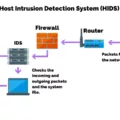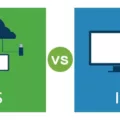Network Access Control (NAC) solutions are designed to help organizations protect their corporate networks from unauthorized or non-compliant devices and users. Using these solutions, administrators can determine who is allowed access to the network, what resources they can access, and how they can access them.
The first step in implementing a NAC solution is to gather data on how users are currently accessing the network. This includes understanding current user authentication methods, if any, as well as the type of devices being used to connect to the network. This data will allow administrators to tailor their security policies to fit their organization’s needs.
Once the data-gathering process is complete, it’s time to catch up on identity management. Administrators will need to create an identity system that allows for the secure authentication of users and devices. This can be done through various authentication methods such as username/password combinations or public-key infrastructure (PKI).
The next step is to determine user permissions and access levels. Administrators will need to decide which resources individual users can have access to and which ones should remain restricted from certain groups or individuals. Once this has been determined, administrators can begin building the security policies for each user group or individual based on their level of access.
Once all of this information has been collected and configured, it’s time for testing. The NAC solution should be tested thoroughly in a safe environment before being rolled out into production systems. This testing should include verifying that all security policies are correctly enforced as well as monitoring system performance under different loads and conditions.
Finally, it’s important that administrators monitor and tune their NAC solution on an ongoing basis. As new threats emerge and technology changes over time, organizations should review their NAC solutions regularly in order to stay ahead of potential security risks and ensure that they remain compliant with industry standards and best practices.
Overall, Network Access Control (NAC) solutions provide organizations with an effective way of protecting their networks from unauthorized or non-compliant devices and users while still providing users with secure access when needed. By following these five steps for implementation, organizations can ensure that their NAC solutions are properly implemented and configured for maximum protection against cyber threats.

The Benefits of a NAC Solution
Network Access Control (NAC) solutions are designed to help organizations secure their networks by controlling access to sensitive resources. NAC solutions allow the organization to define which devices and users can access the network and apply policies to ensure that only compliant devices are allowed on the network. These solutions use authentication, authorization, and accounting mechanisms to control who has access and what they can do once they have access. Additionally, NAC solutions use multiple layers of security such as encryption, authentication, firewalls, intrusion prevention systems, and more to protect the network from external threats. NAC solutions also provide visibility into the current state of all connected devices so organizations can quickly detect any suspicious activity or unauthorized access attempts. By using NAC solutions, organizations can ensure that only compliant devices are accessing their networks and help protect their sensitive information from unauthorized access.
The Benefits of Implementing a NAC Solution
A Network Access Control (NAC) solution is essential for protecting any network from the potential threats posed by unauthorized or malicious devices. NAC systems provide a way to automatically identify and authenticate devices that attempt to access the network, ensuring that only approved devices are allowed in. This verification process helps protect against unauthorized access and malicious activities, such as data theft, malicious code injection, and denial of service attacks. Additionally, NAC solutions can enforce access control policies based on device security posture and user identity, providing a level of granular control over what users can do on the network. This helps reduce the risk of intrusion or data breach due to privilege escalation or vulnerabilities in an application or system. In summary, NAC solutions provide organizations with an effective way to secure their networks while improving compliance with security regulations.
Choosing the Best NAC Solution
The best Network Access Control (NAC) solution for businesses depends on the specific needs of the organization. Cisco Identity Services Engine (ISE) is widely regarded as the top NAC solution and is used by many large enterprises. It provides advanced security controls, including user and device identity-based access control, secure network segmentation, and compliance checks. Additionally, it offers a range of features such as granular access policies and role-based access control.
Forescout Platform is another popular option that provides comprehensive visibility into the network and endpoints connected to it. It also offers automated policy enforcement and allows administrators to quickly detect high-risk devices that may be vulnerable to attack.
Aruba ClearPass offers a cloud-based NAC solution that can provide secure remote access to corporate networks with additional features such as authentication, authorization, and posture assessment. It also supports multiple authentication methods for added flexibility.
Fortinet FortiNAC provides an all-in-one NAC solution with agentless endpoint security capabilities and advanced policy enforcement capabilities that can help protect against emerging threats. Additionally, it integrates with a range of third-party systems for easy configuration and deployment.
Finally, macmon Network Access Control is an enterprise-grade NAC system designed to protect organizations from insider threats by using contextual user analytics and dynamic policies. It also supports granular access control policies for more precise protection of data assets across the network infrastructure.
Each of these solutions has its own unique set of features and benefits so it’s important to evaluate your organization’s needs before selecting a NAC solution that is best suited for your business requirements.
Implementing a Network Access Control (NAC) Solution
Implementing a NAC solution can be done in five steps.
First, gather data on how users are currently accessing the network. This will help you understand the current setup and create an initial baseline to work from.
Second, get up to date on identity management. This includes familiarizing yourself with the various authentication protocols and understanding how they can be used to grant users access to the network.
Third, determine what permissions and access levels each user should have. This will determine how strict the security measures should be and what resources different users can access.
Fourth, test your setup to make sure everything is working as intended and that all security measures are in place. This includes running penetration tests to check for any potential vulnerabilities or weaknesses in your system.
Finally, monitor your system closely and tune it as needed. This means regularly checking for any suspicious activity or unauthorized access attempts, as well as making sure that all security measures are still in place.
What Features Should a NAC Solution Include?
A good NAC solution should be able to provide a secure, automated way of authenticating and authorizing access to your network. It should have the ability to detect and identify any device trying to connect, verify that the device is compliant with your security policies, and apply appropriate access control measures. The solution should also be able to monitor user activities in real time, providing alerts for any suspicious behavior or attempts at unauthorized access. Finally, it should provide an easy-to-use dashboard for configuring and managing policies, as well as generating reports on compliance.
The Use Cases of Network Access Control (NAC)
Network Access Control (NAC) is a security technology that helps organizations protect their networks from unauthorized access. It works by authenticating users, validating their credentials, and then authorizing them to access the network. NAC also monitors user activity on the network to ensure that users are complying with organizational policies and regulations.
NAC has many use cases that can help organizations protect critical assets and secure their networks.
1. Regulatory Compliance: NAC can be used to monitor user activity and ensure compliance with industry regulations such as HIPAA or GDPR. This helps organizations remain compliant while protecting sensitive data from unauthorized access.
2. Secure Network Access: NAC can be used to authenticate users before allowing them to connect to the network, preventing attackers from gaining access to sensitive data or resources. It can also be used to restrict user privileges on the network so that only authorized personnel can access certain parts of it.
3. Guest Network Access: NAC can be used to create separate networks for guest users, ensuring they have a secure connection while keeping important parts of the network protected from unauthorized access.
4. Device Management: NAC solutions often include device management features that allow IT admins to monitor connected devices on the network and ensure they are up-to-date with the latest security patches and software updates.
5. IoT Device Protection: With the increasing reliance on Internet of Things (IoT) devices, NAC solutions provide an extra layer of security by authenticating connected devices before allowing them access to the network, ensuring only authorized IoT devices have access to it.
Conclusion
Network access control (NAC) solutions offer an effective way for organizations to protect their networks and data from unauthorized access. NAC systems are capable of automatically identifying devices as they connect to the network and providing access that does not potentially compromise security. With the help of various Network Access Control (NAC) software solutions, organizations can easily deploy these tools to monitor and secure their networks. Implementing a NAC solution in five steps requires gathering data, catching up on identity management, determining permissions and access levels, testing your setup, and monitoring and tuning. Ultimately, by implementing a comprehensive NAC solution, organizations can ensure that their networks are secure and that all users have the appropriate level of access.








